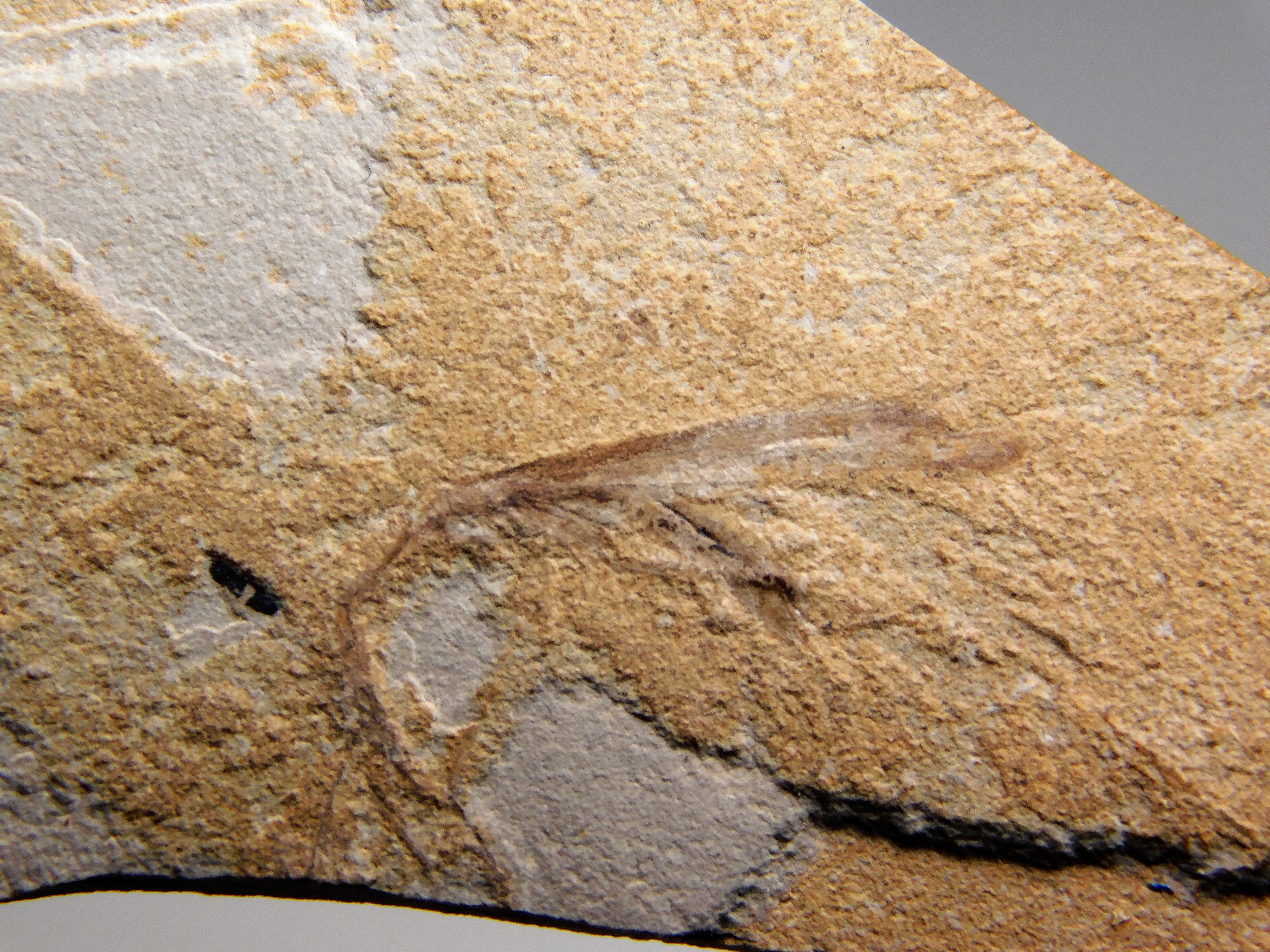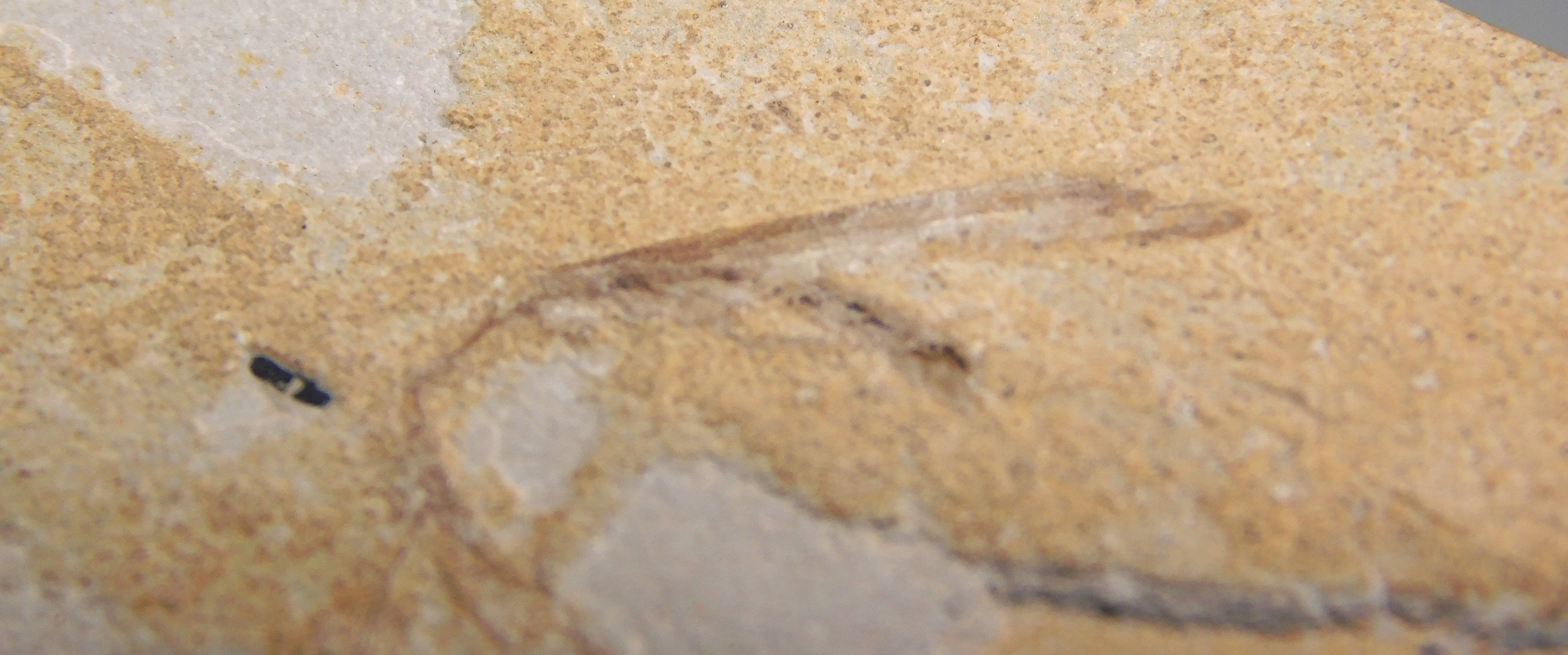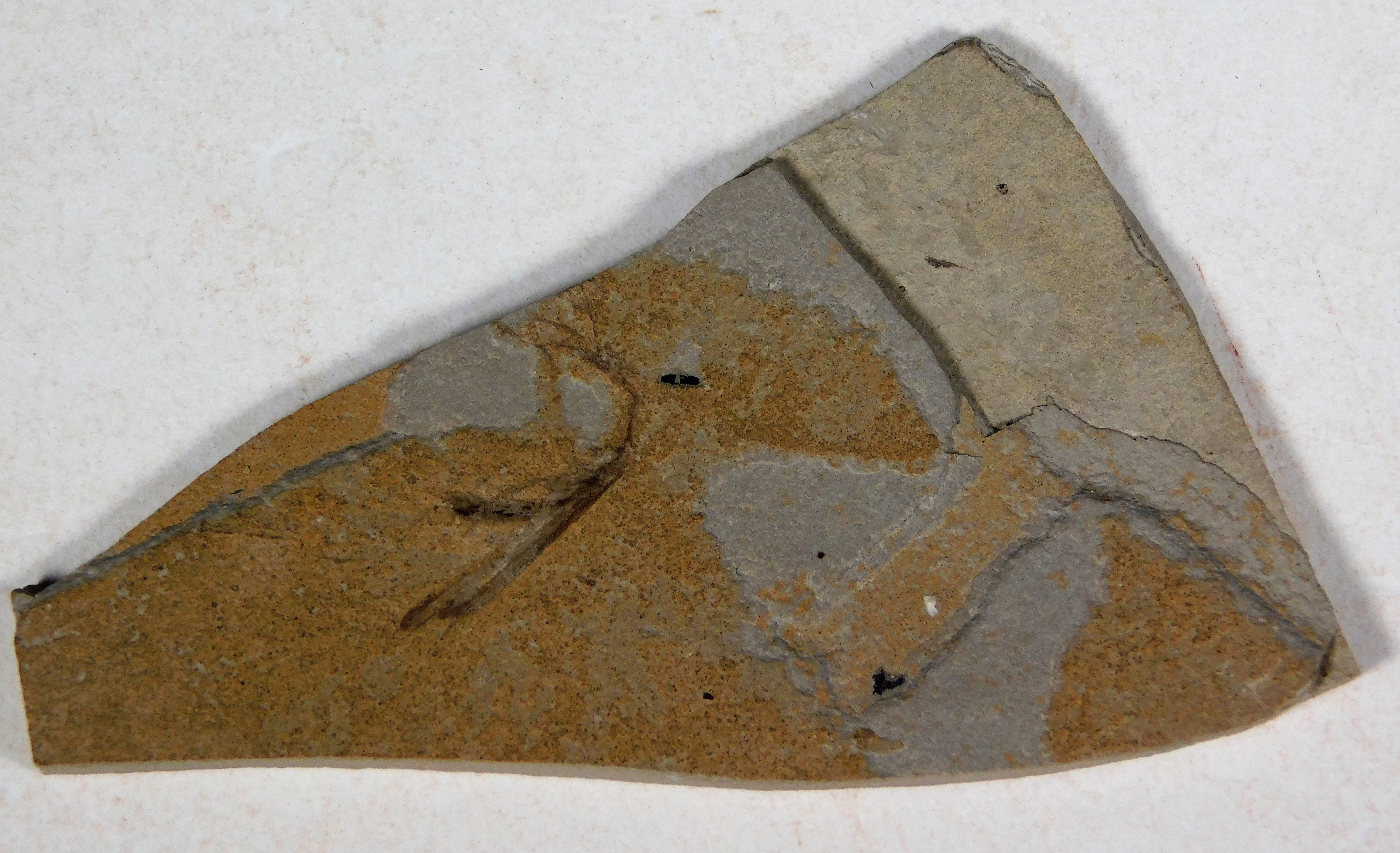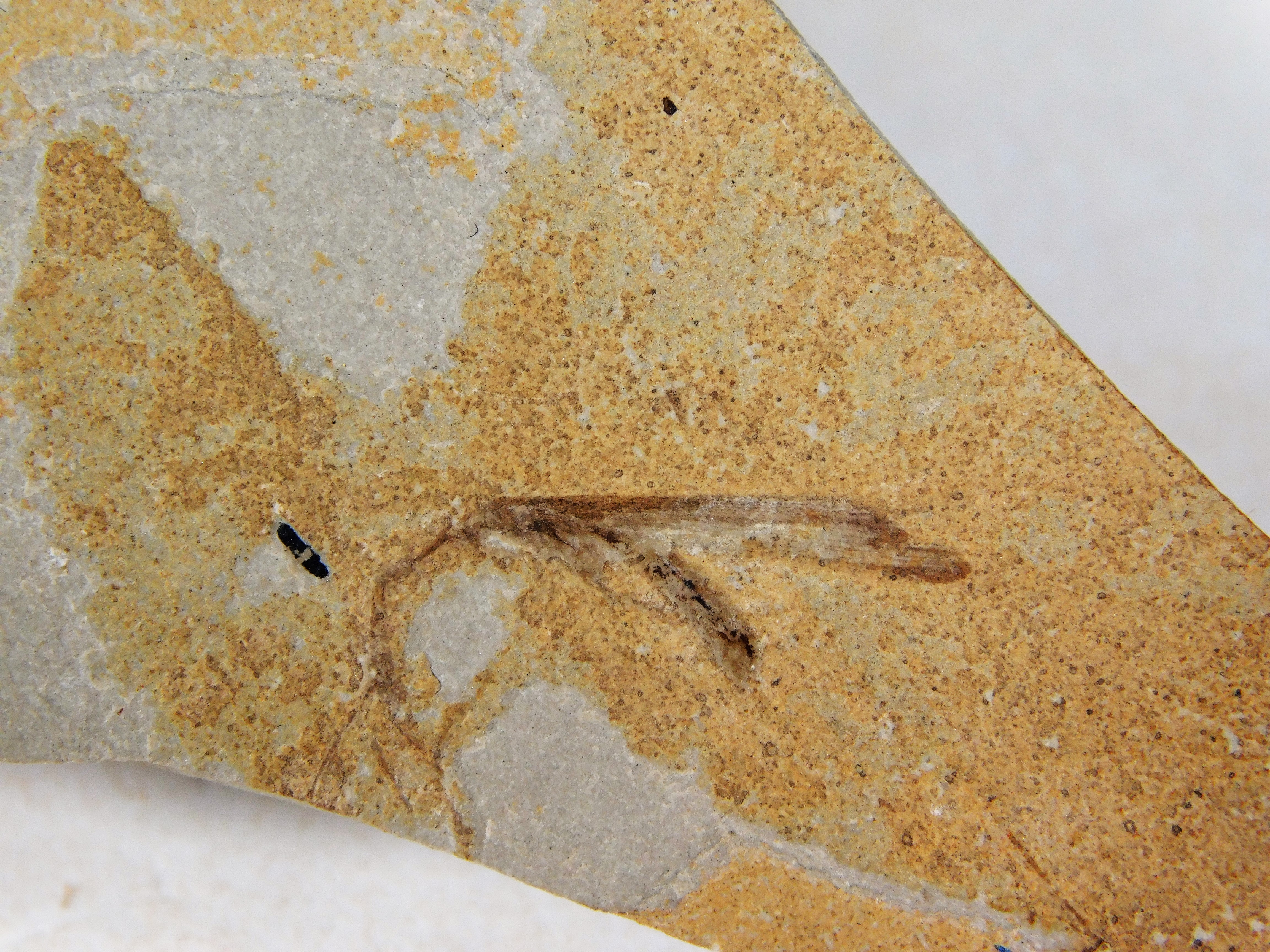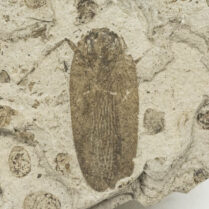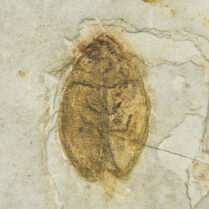Description
Insect
Early Eocene
Green River Formation
Rio Blanco, Colorado, USA
18mm walking stick on 62mm slab.
Arthropod. Insect. Orthopteran.
Walking sticks (phasmids) or stick insects date back at least to the Late Jurassic. They belong to the Order Orthoptera – relatives of grasshoppers, katydids, and crickets. Fossils are rare but they occur in the Green River Formation (as seen here) and nymphs have been collected in Baltic, Mexican, and Dominican ambers. Clearly, they were already excellent mimics of twigs and sticks by the beginning of the Eocene.
Today, walking sticks live in tropical and temperate regions of the world. They drifted with the continents across the Mesozoic and Cenozoic. This specimen lived at a time when Colorado was a tropical lowland before the uplift of the Rocky Mountains and the onset of cooler climates.
It turns out you can evade extinction for over 150 million years just by going with the flow of a passing breeze and not drawing attention to yourself. Becoming gigantic and having large teeth has a long history of not working out in the long run.


